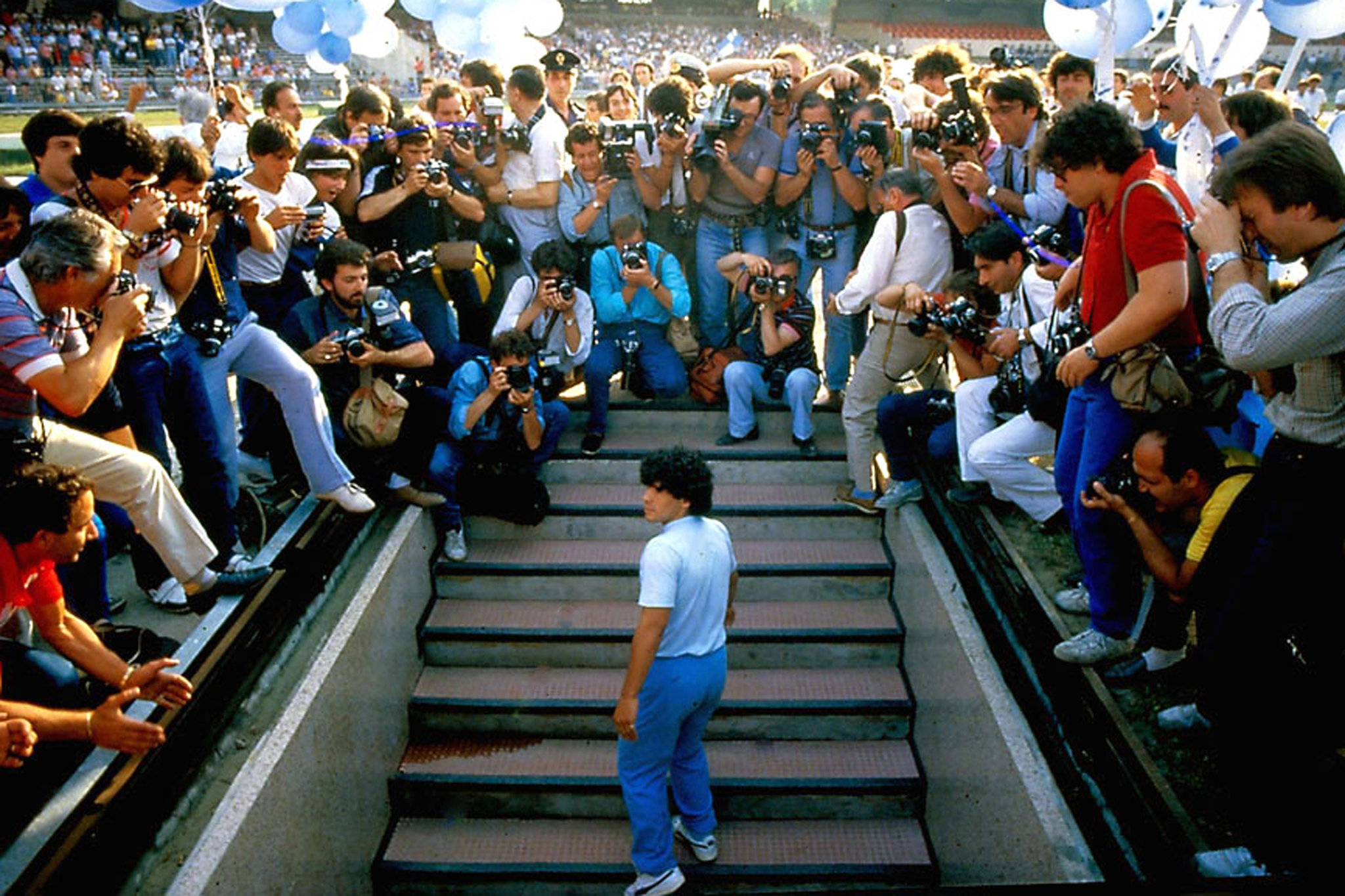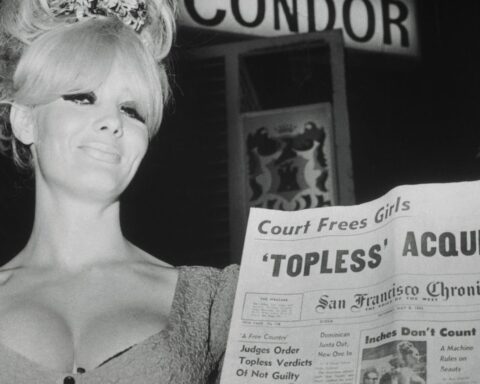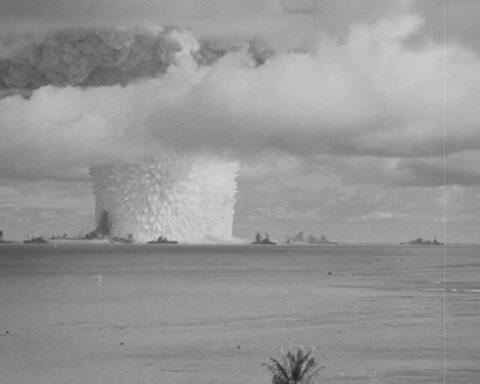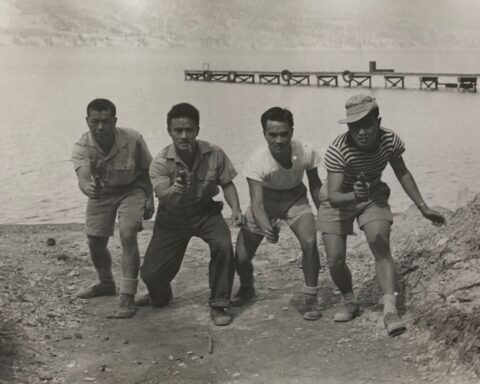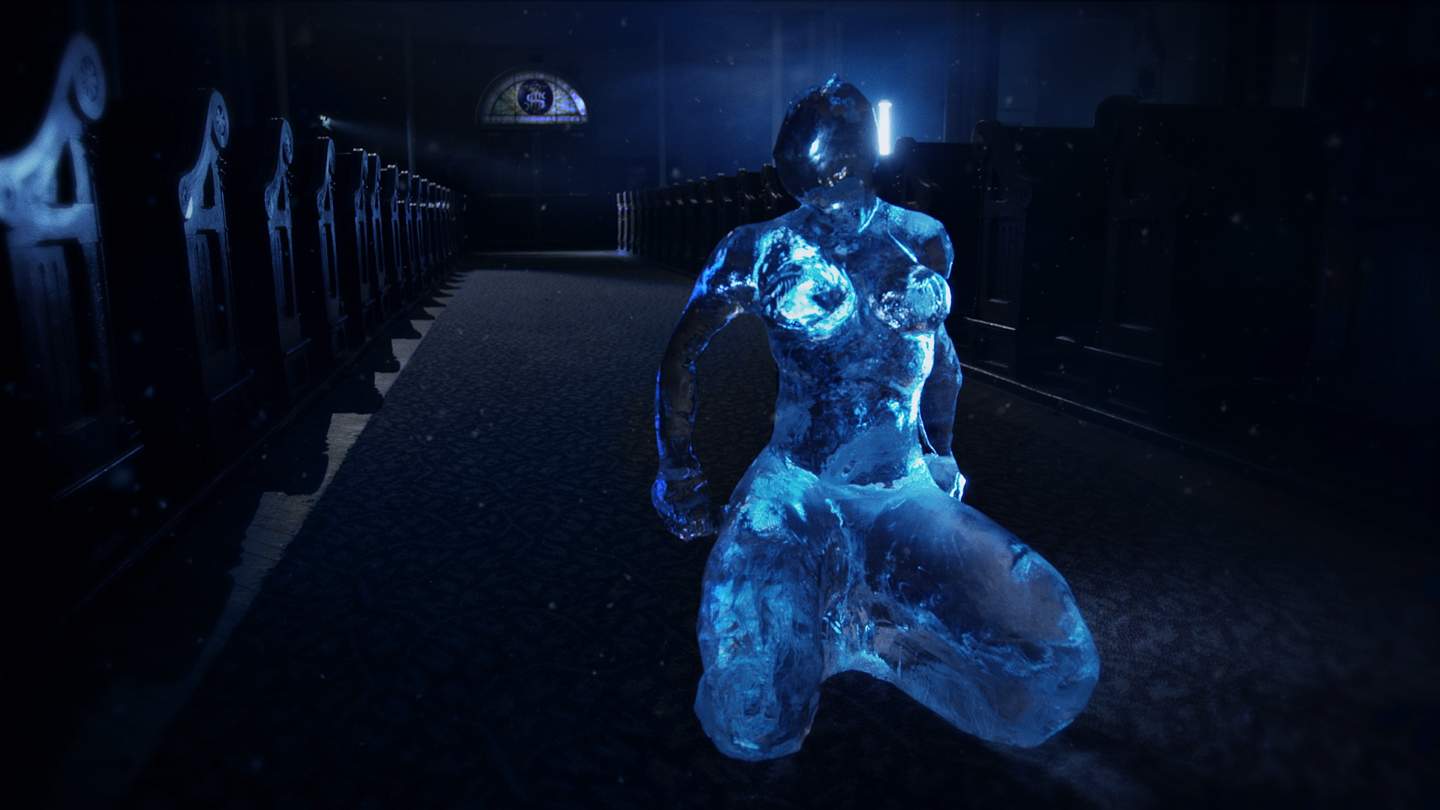Academy Award winner Asif Kapadia has firmly established himself as one of the world’s most popular and celebrated documentarians. His groundbreaking film Senna (2010), which distilled the drama of Brazilian racecar driver Ayrton Senna’s life and career through archival footage matched with contemporary and vintage interviews, set the stage for a distinctive mode of storytelling that has captivated audiences throughout the world. His follow-up, Amy (2015), used the same process to look at iconic British vocalist Amy Winehouse’s rise and fall in the music business; it debuted at Cannes and went on to win the Oscar for Best Documentary Feature.
With his new film Diego Maradona, Kapadia concludes his loose trilogy of biographies of complicated superstars. The Argentinian Maradona dominated a decade of football, leading Napoli to the first Serie A championships ever won by a southern Italian team and making British fans fume for decades with his infamous “Hand of God” strike en route to captaining his country to victory in the 1986 World Cup. Like Amy and Senna, Kapadia’s latest film uses his technique to provide a welcome context and emotional richness to Maradona’s story.
The film premiered at Cannes in May and will be making its way to Canadian audiences this fall.
POV spoke to Asif Kapadia in London by phone.
POV: Jason Gorber
AK: Asif Kapadia
This interview has been edited for length and clarity.
POV: You have tackled Formula 1 with Senna, popular music with Amy and now football with Maradona. Which topic is nearest to your heart?
AK: Of the three, I would always say football. Football is the one which I have been most interested in and which has always been a big part of my life. I love music, I love all sports, but I would say football is the one that is nearest and dearest.
POV: That comes across in this film, which isn’t only a celebration of one of the great characters of the sport, but of football itself, warts and all. Was it a challenge to create distance for this story?
AK: You’re the first person to say that to me and I’ve done quite a few bits of press! I’m glad because I am a fan of football. The film is showing the good and the bad, showing the awful sides of obsession and fandom and racism and politics and wars. All of this stuff gets mixed up in the sport while I’m still trying to show the beauty of the game. In a way, this is football from when I was younger; it’s not really how it is anymore.
POV: Those “good old days” when everybody was consistently throwing racial epithets…
AK: Unfortunately, that still goes on. I’m talking about the violence of the pitch. If you were to go to Italy now and see a Napoli game there would be people from the North singing the same racist songs.
POV: Was it always Maradona you wanted to follow? What drew you to him as the subject of your new film?
AK: Actually, the idea of making a film about Maradona predates Senna. I read a book about Diego Maradona when I was still a student at film school in the mid ’90s and started thinking about his amazing life and how much drama and chaos surrounded him. I hadn’t made a documentary; I was still doing fiction films, but I thought, wouldn’t it be great to make a film about him? The opportunity came along after Senna but having made a film about a Brazilian sporting icon, I wasn’t ready to do the Argentinian sporting icon straight away. I did a few other things, including Amy. When it came around again I was older. I was interested in Maradona as a subject not only because he’s alive, but because it’s a story of someone who has also gotten older. It’s about children and it’s about family, about whether you’re dealing with your own mistakes from your past or not.
POV: There’s now a recognizable “Kapadia shtick,” where historical footage is buttressed by interviews, many of them contemporary. The timeline of the footage never goes past where the storyline takes place, while many of the interviews are retroactive. In Senna and Amy, they ended when their subjects died. Here you have the subject of the film reflecting upon events from many years ago. How did that shift your process?
AK: That’s a great question. That was one of the things that changed, as these things often do, during the process of making the film. At first I was told there’s an opportunity to make a film about Diego Maradona. He’s still alive, and part of the deal would be I would get to talk to him. Contractually, I was told I had nine hours to interview him, three three-hour interviews over lunch. I thought we would do a bit of research, go and meet him, and see what happens. I would take a camera and might actually film him and see how we go, changing my style a bit. He was living in Dubai at the time, and the first time I went to meet him, a big crew came along because everyone wants to meet Diego Maradona. The producers came, we had a camera person and a sound person and a translator—eight of us turned up—after his people told us which dates he was available.
We arrived and his people said, “Oh, he’s not great today, he’s not well, can you come back tomorrow?” The day after tomorrow, he was still apparently not well. In the end we were there for a week and nothing happened. I could just see my budget being blown in the bar. I realized I didn’t want to do this: I’m not going to make one of those films where I hang around waiting for famous people. I said I’d love to just say hello, but I’m going home. So after a week of waiting, I had five minutes with Maradona. I went to his home, I barged my way in for five minutes, shook his hand, said, “We’ll make a great film together,” and that was it.
My plan for interviewing him quickly went out the window. I realized this film was going to be very similar to Senna and Amy in that I was going to have to end up making it without the lead character. When I was ready, I would go back and talk to him, and we’d see what he has to say about what, from the research, we actually found and what was available in the historic footage. That’s how it worked. I got rid of the team, I got rid of the camera, I said to Maradona “I’m just going to chat. I don’t want you performing. I just want to talk to you about your life.” So when you hear his voice, that’s all from my interview, but I wasn’t going to build the film around it. It was going to be based on what I found from the research in the archive.
POV: This allows you a certain distance from the subject of your film.
AK: The interesting thing is the famous character that you’re meeting and spending time with is rarely the most reliable witness of their own life story. You’re actually meeting someone entirely different to who they were then. Our research brought up this idea of Diego and Maradona being two different entities. I’m meeting someone on the far end of the Maradona scale, but I’m making the film about someone who was Diego. It was his trainer who really put this idea into my head. I said to him that I was to be meeting Diego the next week and he said, “Just be aware, you’re going to be in the presence of the world’s greatest liar.” In Maradona, you’re dealing with someone who’s a brilliant storyteller, a brilliant character, but not necessarily the easiest person to look back on his life with—particularly anything that’s going to be seen as a mistake or a misstep.
POV: How did you conduct the interviews? Did you show up with a Zoom portable recorder and a mic?
AK: Absolutely. It is really like doing radio. I’m a big radio guy, I really like the idea of the intimacy. Having brought the big crew on the first meeting, where it was a waste of time and money, the second time I went with just myself and a translator who was also an archive producer. I was a sound recordist on a Zoom in his living room.
POV: For the other films, you’d actually bring people in to a recording studio?
AK: Mainly yes, but that wasn’t going to happen here because Maradona was not going to leave his home, so we had to go to him. Most of the films are a mix of both. There are certain people who will come to me but other times, I have to go to them. All of the films have sonic mixtures from a professional sound recordist, but some of the audio would originate in a studio, or from interviews that I’ve done on a Zoom.
POV: Do you get different interviews out of those three environments?
AK: The reason I like the studio is because you forget about time, you forget your phone, you forget about distractions, you don’t have your family or you don’t have your own possessions. I’m not intruding on someone’s home and I like the idea we’re in a neutral place. On Senna, I was dealing with certain people like Alain Prost, for example. He’s a four-time world champion, a multi, multi-millionaire: he’s a massive guy. You go to him, and you go to his home in Paris, which has the most incredible view of the Eiffel Tower outside of the window! In Amy, I had big-time musicians, so I went to them. I did interviews with their friends, and really intimate ones had to be done very privately in a safe place in the studio.
On Maradona, I went to his house for the first interview I did and recorded it myself on the Zoom while he was sitting on the sofa, watching football on TV. Gradually, as we built up trust, I expanded the team. The next time I brought my own local recordist. By the time I did a final interview I’d been working a lot in Italy and done quite a few interviews in Naples. There’s a brilliant Neapolitan sound recordist named Luca, who is a big Napoli fan, so I thought that would keep Diego happy. For the final interview, I brought Luca all the way from Naples to do the recording. He and Maradona got on like a house on fire. Diego just calmed down, which got him in the mood not to rush off while I was doing the interview.
For that final interview, I had a phone dialing Buenos Aires where Laura was doing the live translation and calling me on another phone, which I was listening to in my ear, so that I could hear what he was saying live and not have to pause. On my computer I had a FaceTime call with researchers in London who could do real-time fact-checking. Diego’s sitting in his chair, it looks no different to him, but I’ve got a sound recordist from Italy, someone in Buenos Aires listening in, and two people in London doing fact-checking, all happening live at the same time. To Maradona it had to feel like there was no difference from the first time when I was just there myself.
POV: He never felt any of the tension of it, but it allowed you to actively do follow-up questions.
AK: He’s a genius at misdirection. If I ask a question about the son that he didn’t recognize, he will give me an absolutely brilliant, funny, sad, moving answer about corruption in FIFA. When he’s talking and I don’t have a translator, I’m nodding away going, “This is great, this is brilliant,” and then when I hear the answer, I’m going, “What?! That’s nothing to do with what I just asked you!” So I had to have live translation and then I could interrupt him, which he’s not used to. I could say, “That’s really great, but sorry, that’s not actually my question.”
This happened when I had to deal with the heavy stuff, the darker things in the story. I kept interrupting him when he went off message and he got a bit annoyed. There was one point when he did look at me and he said, “You’ve got a real nerve!” There was a very long pause. At the time, I was just listening and nodding, because I don’t speak Spanish, and I kept laughing and nodding and going, “Great, great, this is great,” and then the translation comes to my ear from Buenos Aires and I’m thinking, “Oh shit!” But after that pause he said, “I respect you, because most people do not have the nerve to ask me these questions to my face.” We got to that place, which was good.
POV: You earned his trust, at last.
AK: Early on I learned that he’s a big Senna fan. I think that was part of the reason why this film came about. He was a big fan of the man, and really loved the film. He realised that the guy who made Senna, the guy who just won an Academy Award for Amy, was making a film about him. It did go down quite well with Maradona.
POV: Was it a bigger challenge to get the footage on Maradona than with Senna or Amy?
AK: Senna will always be the most difficult because it was the first film where we tried to do this idea. There were lots of people who didn’t believe in the concept and felt we were wasting time, looking for more footage to tell the story. Sometimes, technically, the footage didn’t look great, or sound great, and I would insist that it was a really important moment and I wanted to use it anyway. But because of the success of Senna and Amy, we don’t have to prove the concept anymore, now it’s just a question of where the footage is coming from.
A large portion of Senna was based in the UK. The F1 teams are mainly in the UK, and so was the footage. Amy is a London film, a few miles from where I live. I could walk to most of the interviews.
With this film, not that much happens in the UK. We’re editing in the UK, we’re based in the UK, but the story takes place in Naples, Diego’s living in Dubai, and all of the key contributors we found lived in Buenos Aires. So, for a doc, it was really logistically complicated and expensive because I couldn’t just say, “Can I talk to you next week?” It would be more like, I’ve got to set up a meeting with Diego, and it might be in six months’ time. If I’m going to Buenos Aires, it’s fifteen hours away. I can’t just do that whenever I want to. I’ve got to build it around the seasons and when people are on holiday. So it was very complicated and difficult. Plus, we’re dealing with Neapolitans and we’re dealing with Argentinians, who have absolutely no trust of anyone English. You’ve got to speak to them in their own language, so you’ve got to go there and you’ve got to meet them in person. Nothing happens by phone, nothing happens over email, you go and talk to someone, have a really strong coffee, chat to them, have some pizza, and then talk business, then go away and come back again, and go away, and come back again, until eventually they accept you as family.
POV: Did you have to pay for footage for this film?
AK: A lot of the personal footage of Diego comes from cameramen who were hired to film him. When he was starting out, his first agent had the idea to make a film about Diego Maradona. He hired two Argentinian cameramen to film him in 1981. They followed him around in Argentina, Barcelona, and in Naples. Then they got fired because the agent got fired, and so the film was never completed. We essentially got hold of this footage and created a film in 2019. There were other sources. One of the hardcore fans—they’re called “Ultras” in Latin America—had a lot of footage. There’s a particular shot of Diego Maradona, towards the end of the film, looking very lonely and very quiet. There’s no talking. He’s just looking and contemplating his life and how it may have gone wrong. That came from this guy Montori. No one’s ever seen it before. There were lots of VHS tapes that he shot of Diego. Maradona used to come often to his house—he literally is the godfather to Montori’s child. When they won the championship, Montori was in the changing room. He shot all of the bowling alley stuff. He was unbelievably difficult to deal with. The guy’s a street kid, he’s a street fighter, and these guys are not the kind of people that trust anyone. So that was a very complex relationship that we had.
POV: Your other two films had very specific endings but this one doesn’t. Why?
AK: Rather than trying to force everything in, we focus on the time where he became the best player in the world, and where it all started to go wrong. Naples is the biggest character in his life, other than Buenos Aires, where he grew up. He never spent seven years anywhere else in his life. We had amazing footage of Naples, where he led them to their only two championships. It was always going to be the A story. Everything else is the legend, the myth that is Maradona.
Diego Maradona opens Friday, Sept. 27 at Hot Docs Ted Rogers Cinema and streams on Crave later this fall.




